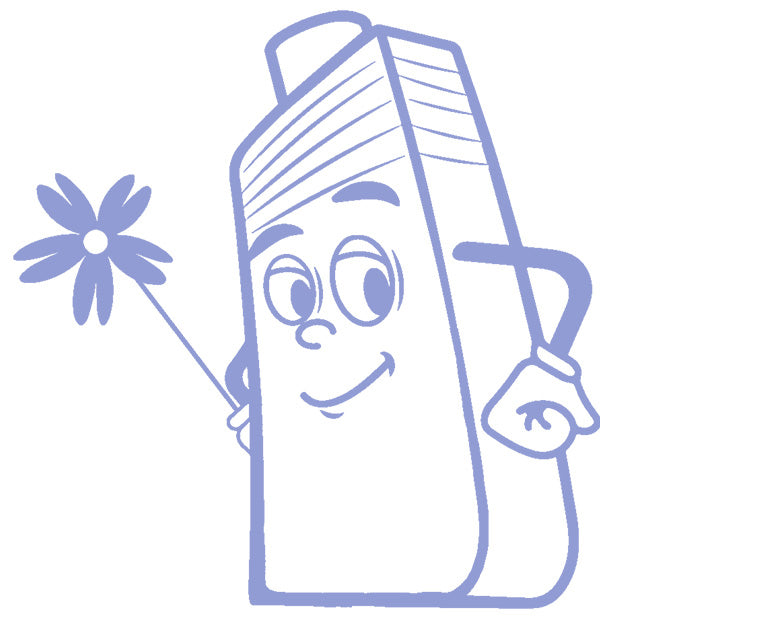How much hair grows in a month depends on several things. And your hair growth rate can significantly impact your hair thickness and health. So keep reading to learn how much hair grows in a month.
Index
How Much Does Hair Grow in a Month?

So, how much does hair grow in a month? According to The Trichological Society, the average hair growth rate is between 0.5 and 1.7 centimeters (0.2 to 0.7 inches) per month. This varies based on multiple factors, which will be discussed in detail below.
How Long Does Hair Grow in a Year?
You may also wonder, “How much does hair grow in a year?” In a year, hair grows somewhere between 6 and 20.4 centimeters (2.4 to 8.4 inches). That’s not much, so taking care of your hair is essential to prevent breakage and maximize growth (more on that later).
So to recap, the answer to how quickly hair grows is a range:
How much hair grows in a month: 0.5–1.7 centimeters
How much does hair grow in a year: 6–20.4 centimeters
The reason why there is such a wide range is that there are many factors that influence hair growth.
Measuring How Much Your Hair Grows
What if you want to know how much your hair grows in a month? Try one of these methods to measure how fast your hair has grown:
The first method for measuring how much does your hair grow in a month is very simple. However, this way to learn how much hair grows in a month works only if you color your hair. So what do you have to do? Just measure your roots one month after coloring.
The second way to see how much does your hair grow in a month is not as precise but anyone can do it. If you don’t color your hair, you could discover how much your hair grows in a month by taking pictures of your hair with monthly intervals. It is crucial to keep your hair in the same position and take the photos from the same angle. Another way of checking how much your hair has grown in a month is simply measuring it with a measuring tape if you have an even haircut.
Note that this method is not as precise, as your ends could have worn or broken off making it seem like your hair has not grown as quickly.
How Much Does Your Hair Grow in a Year?
You can find how long your hair grows in a year by multiplying the monthly average hair growth rate by 12. However, many factors can influence your average hair growth rate, so take this number with a grain of salt.
The Hair Growth Cycle Explained
Before we get into the hair growth cycle, we need to talk about hair anatomy. Each hair grows from a hair follicle that consists of three parts:
- The bulb (where your hair grows)
- The sebaceous gland (produces oil that moisturizes your hair and scalp)
- The shaft (the visible part of the hair)
The average person has around 100,000 hair follicles on their scalp, which partially determines hair thickness.
Each shaft grows from the bulb in a four-part cycle known as the hair growth cycle.

- Anagen (Growth) Phase – New hair actively emerges from the bulb. The length of your anagen phase determines how long your hair can grow. The anagen phase lasts somewhere between two to seven years. So if you have a short anagen phase that negatively affects how long your hair grows in a year.
- Catagen (Transition) Phase – During this short phase, the hair growth rate slows as the follicle shrinks.
- Telogen (Resting) Phase – The hair shaft rests while a new hair grows beneath.
- Exogen (Shedding) Phase – The follicle releases the hair shaft. The hair falls out, and the follicle returns to the anagen phase. It’s normal to lose somewhere between 50 and 100 strands each day.
It’s important to note that every strand of hair is in a different place in the hair cycle. That’s why most humans don’t shed all their hair at once.
What Affects How Fast Your Hair Grows
Factor #1: Diet
Good nutrition is essential for healthy hair growth. So if you want to maximize how fast your hair grows, pay special attention to your diet and consider dietary supplements for hair.
Factor #2: Age
Hair grows most quickly between the ages of 15 and 30. As we age many processes, including our hair growth rate, begin to slow down.
Factor #3: Genes
How fast your hair grows also depends on the hair growth rate of your parents.
Factor #4: Gender
Research has shown that men’s hair tends to grow faster than women’s hair.
Factor #5: Hair Type
Textured, coily hair grows more slowly than straighter hair types. So the more curly your hair, the less it will look like it is growing. For measuring how much your hair grows in a month in the case you have curls I recommend stretching your hair straight to get a more accurate idea.
Factor #6: Ethnicity
According to a 2005 study, Asian hair grows the most quickly, while African hair grows the slowest. Caucasian hair is somewhere in the middle. Research has shown that people of Asian descent have the longest anagen growth phase, meaning that their hair can grow the longest before falling off.
Factor #7: Seasonal changes
Some researchers think that how fast hair grows is dependent on the season. They argue that hair grows more quickly in the summer because of changes in diet (like eating fresh fruits and vegetables) and more sunlight.
Factors That Slow Down How Quickly Hair Grows
Some factors can slow down how quickly your hair grows. So if you are looking to speed up the rate at which your hair grows, pay attention to these things.

1. Stress
Stress is one of the most significant factors determining how much hair grows in a month. Stress-induced hair loss is called telogen effluvium, which triggers the hair follicles to enter the telogen phase too early. Then, around two months later, the hair sheds. As much as 70% of hair can fall out because of telogen effluvium. In addition, telogen effluvium affects hair growth because the fewer hair follicles in the anagen phase, the less your hair grows.
2. Medical Conditions
Some medical conditions, like major illnesses and surgeries, can also trigger telogen effluvium. Cancer treatment can also affect how much hair grows in a month. Hormonal fluctuations, like those associated with menopause, pregnancy, and hypothyroidism, can also slow hair growth.
3. Diets
Crash diets can affect how fast hair grows. If you’re not eating a proper diet with plenty of hair-healthy nutrients, you may experience slowed hair growth. Crash diets can also shock the body and trigger telogen effluvium.
4. Smoking
Smoking constricts your blood vessels, preventing necessary nutrients from reaching your hair follicles. Thus, smoking may negatively affect how fast hair grows.
5. Vitamin Deficiencies
As I mentioned before, a healthy diet is essential for healthy hair growth. If you’re not getting all the vitamins and minerals you need from your diet, you may experience slowed hair growth or hair loss. Nutrient deficiencies can also cause brittle hair that’s more prone to breakage.
Hair Growth Rate By Age
How quickly hair grows also depends on your age. Hair grows most rapidly between the ages of 15 and 30 , then starts to slow down. Some people’s follicles stop producing hair altogether, which is why many experience hair thinning or balding as they age. Hair tends to become finer and finer as we age, so it will also seem to grow less and break more easily.
Age-related slow hair growth just applies to hair on your scalp. For example, some men find that their beard grows faster after age 50.
How To Speed Up Your Hair Growth Rate
While many factors that influence how quickly your hair grows are out of your control, the good news is you can make some lifestyle changes to influence how much your hair grows in a year. The key is to take a two-pronged approach by activating new hair growth and preventing breakage to maintain your length.
How To Activate New Hair Growth:
1. Take Hair Vitamins
The easiest way to change how long hair grows in a year is by taking hair vitamins like Hairlust Hair Formula supplements. These supplements are designed to fuel your follicles with all the vitamins and minerals required for healthy hair growth.
2. Use Hair Growth Shampoo
Another simple way to improve how much hair grows in a year is by using a shampoo specially formulated to promote hair growth like Grow Perfect™ Shampoo. This shampoo includes Anagain™ and organic rosemary oil, both clinically proven to improve hair growth and density.
For best results, pair with Grow Perfect™ Conditioner.
3. Apply Hair Growth Serum
Amplify how much hair grows in a month by consistently applying Grow Perfect™ Hair Growth Serum to your scalp. This hair growth serum is formulated with natural ingredients clinically proven to penetrate the scalp and boost hair growth.
Hint: Want to learn more about hair growth serums? Check out the article “Do Hair Growth Serums Really Work?”.
4. Try Scalp Stimulation
Your blood vessels deliver the nutrients your hair follicles need to grow hair efficiently. So, another way to improve how fast hair grows is to stimulate circulation in the scalp.
One way to do this is by massaging your scalp with a product like Scalp Delight™ Scalp Massage Brush. According to a 2016 study, a daily four-minute scalp massage can improve hair thickness. Other products that can improve scalp health include Grow Perfect™ Thickening Spray and Scalp Delight™ Detox Scrub.
How To Keep Your Ends Healthy and Prevent Breakage:
1. Use Repairing Hair Masks
Improve your hair’s health from the outside in by applying hair masks regularly. Think of hair masks as super-charged conditioners.
For hair that feels gummy or sticky (a sure sign it’s lacking protein), I recommend Protein Repair™ Hair Mask. This protein treatment for hair uses vegan micro-proteins to rebuild compromised hair fibers. With regular use, Protein Repair™ Hair Mask reduces split ends by up to 20%*.
For hair that feels brittle and dry, I recommend Split Fix™ Hair Mask. This deeply moisturizing hair mask utilizes natural ingredients like jojoba oil to hydrate parched strands and prevent breakage.
2. Apply Heat Protection
If you’re going to use hot tools, heat protection is a must. Hot tools like straighteners and curling wands dry out your hair, which can lead to breakage. Of course, the best thing for your hair is styling your hair with heatless hairstyles.
But if you want to use hot tools, use a high-quality heat protectant like Thermal Shield™ Heat Protectant. This heat protectant spray defends your hair against heat damage and leaves it with a glossy texture. It also hydrates hair with naturally-derived ingredients like organic aloe vera, glycerin, and oat kernel extract. And since this heat protectant spray is formulated without silicone, you don’t need to worry about it weighing down your hair.
3. Use a Leave-in Conditioner or Hair Oil
Keep your hair protected and moisturized all day by styling with a leave-in conditioner or hair oil. Try for example Split Fix™ Leave-in Conditioner, which provides lightweight hydration and defense against environmental aggressors thanks to its formula of natural moisturizers and antioxidants.
If you wanted to know, “How quickly does hair grow?” we hope this post answered your question! How fast hair grows can depend on many factors. The good news is that you can control many factors contributing to how much your hair grows in a month.
*These studies have been conducted by BASF. For more information about the studies, visit www.personal-care.basf.com, www.ashland.com, or www.carecreations.basf.com.






























































